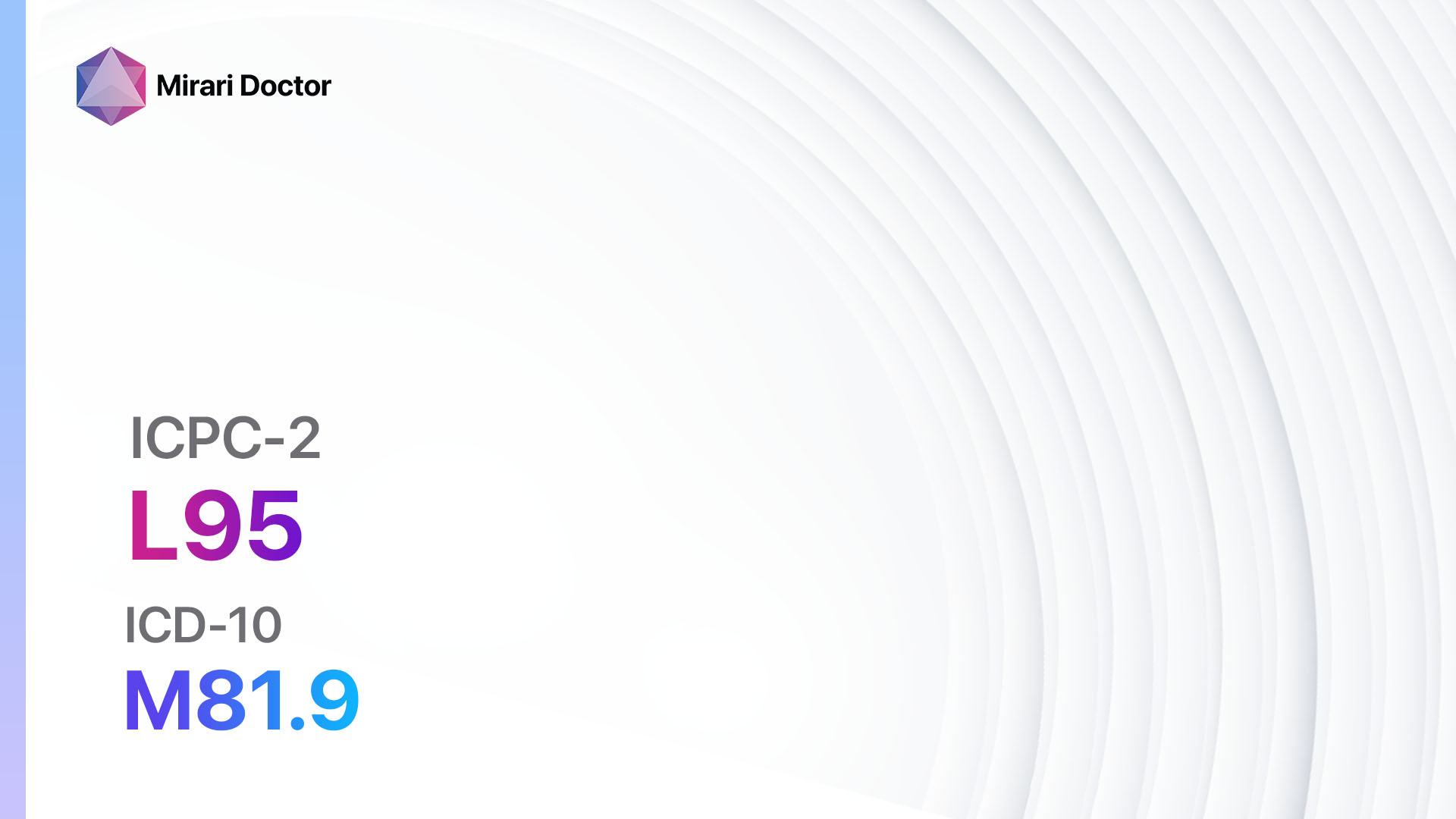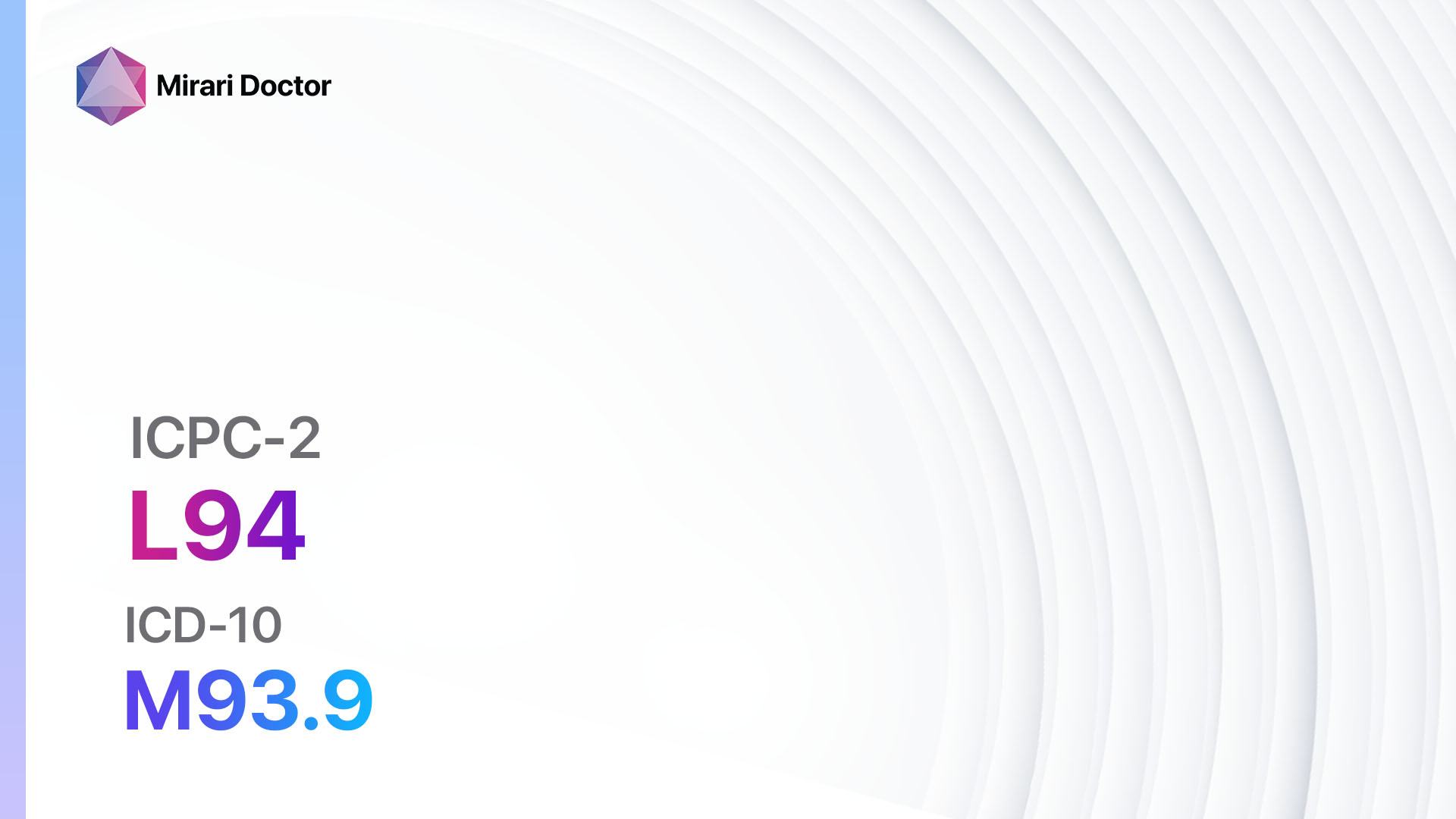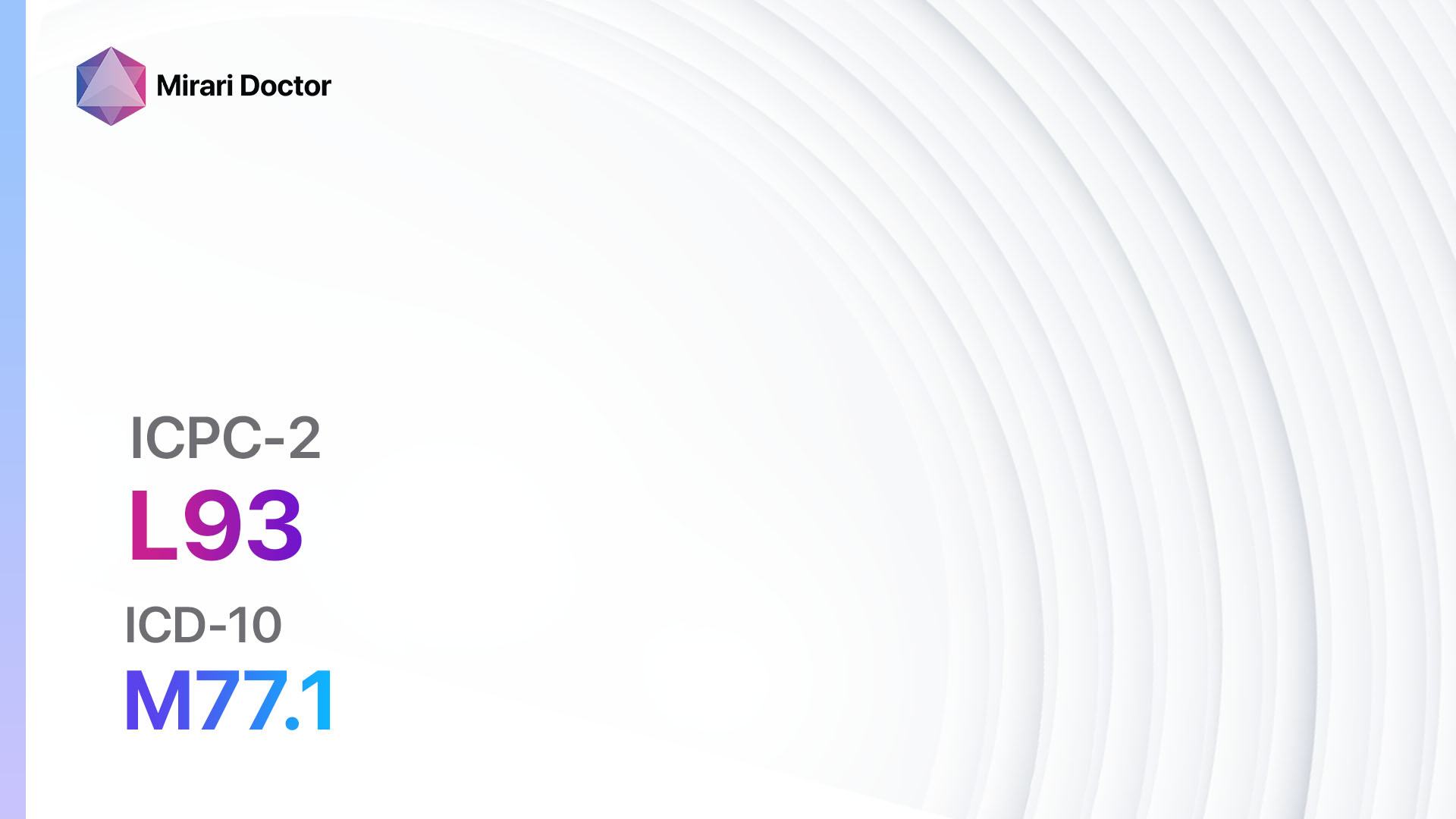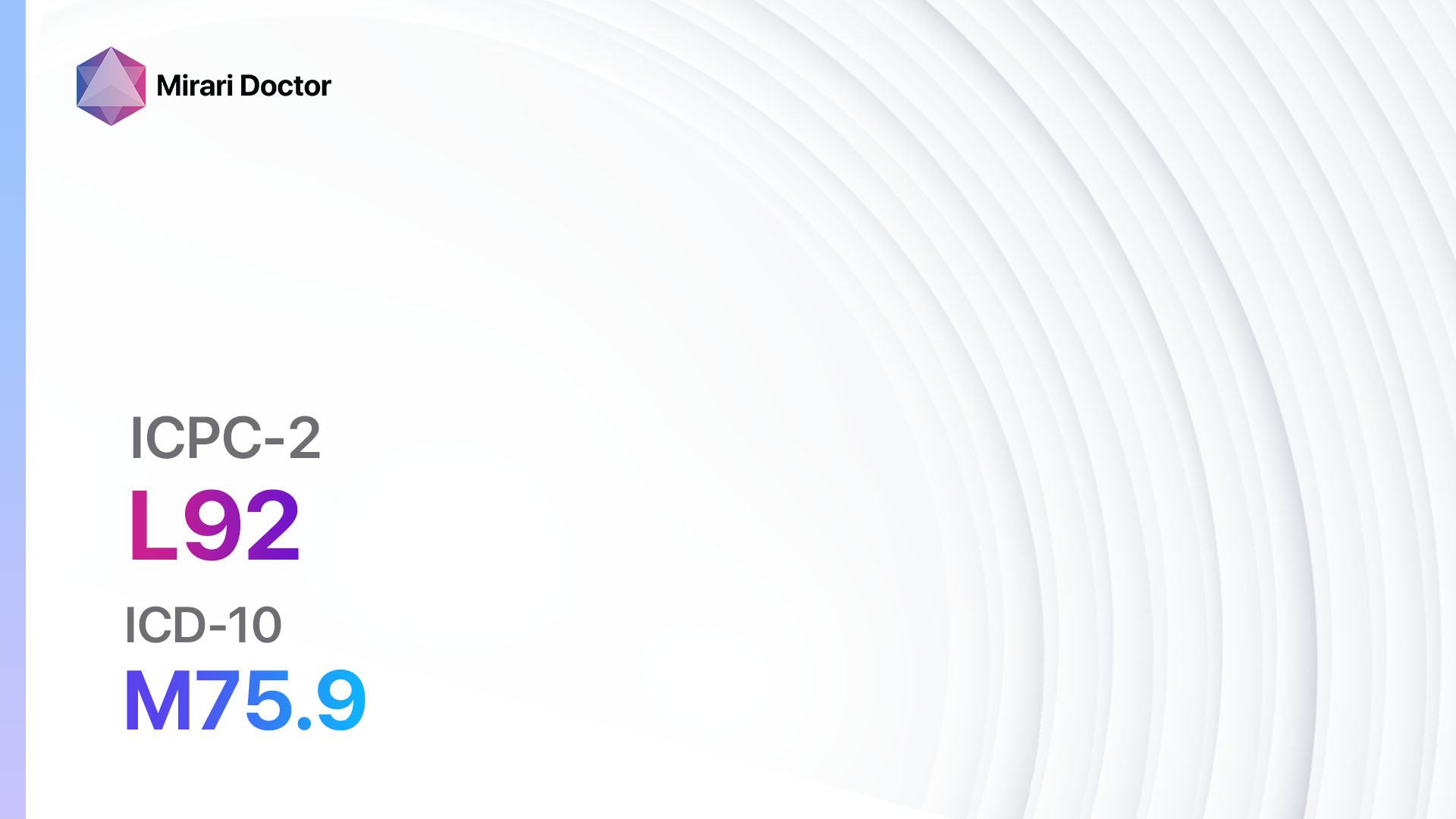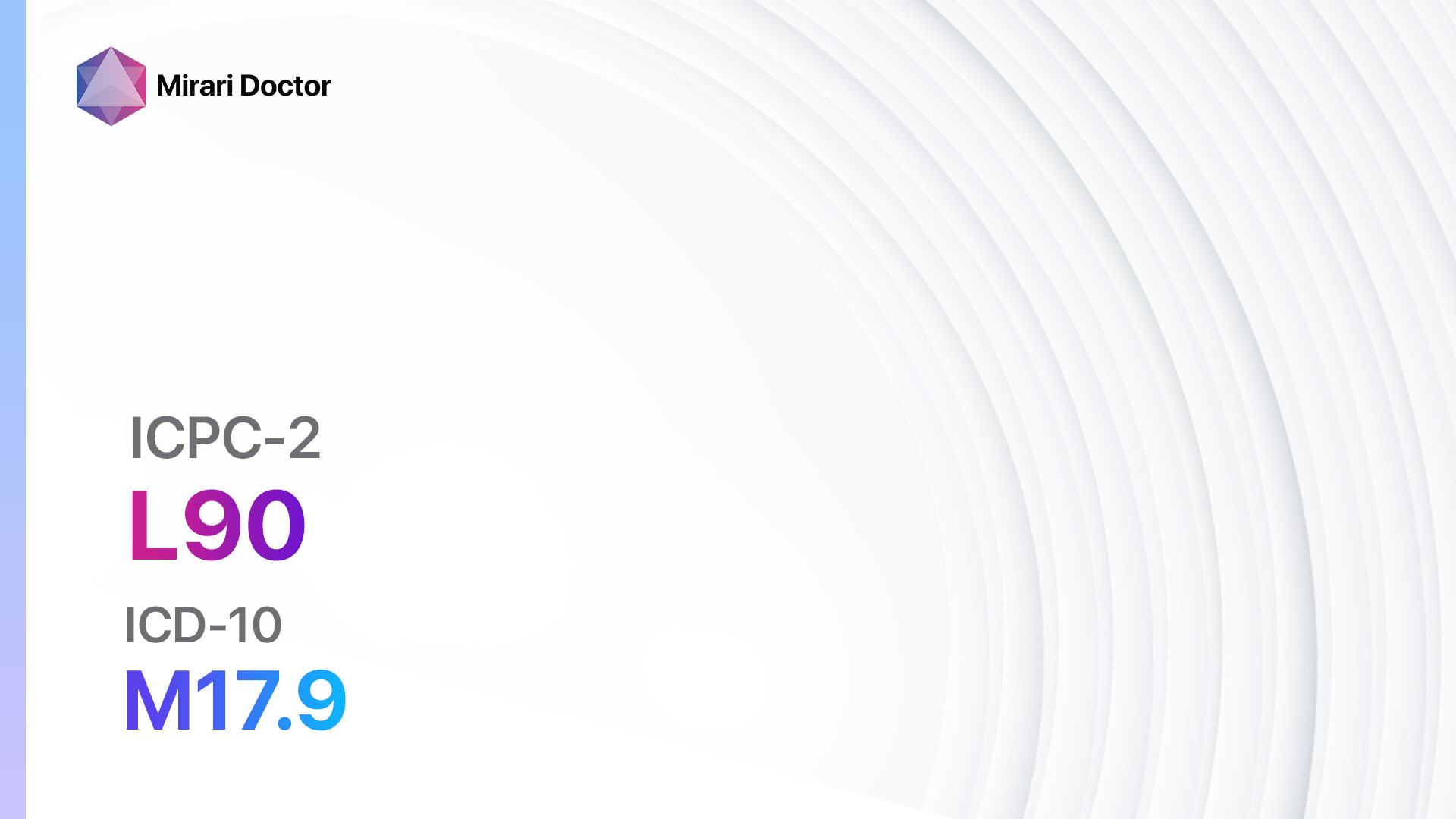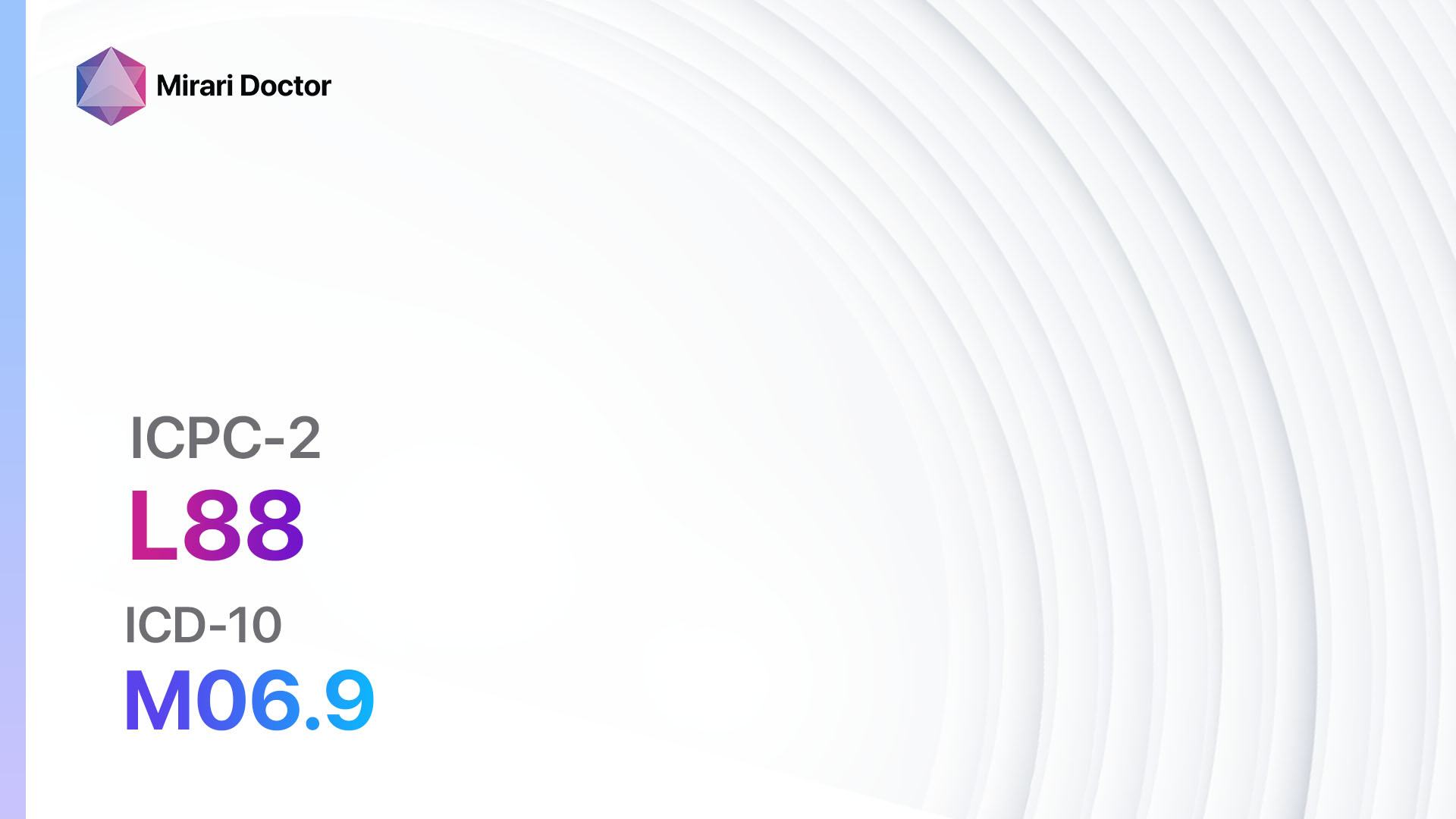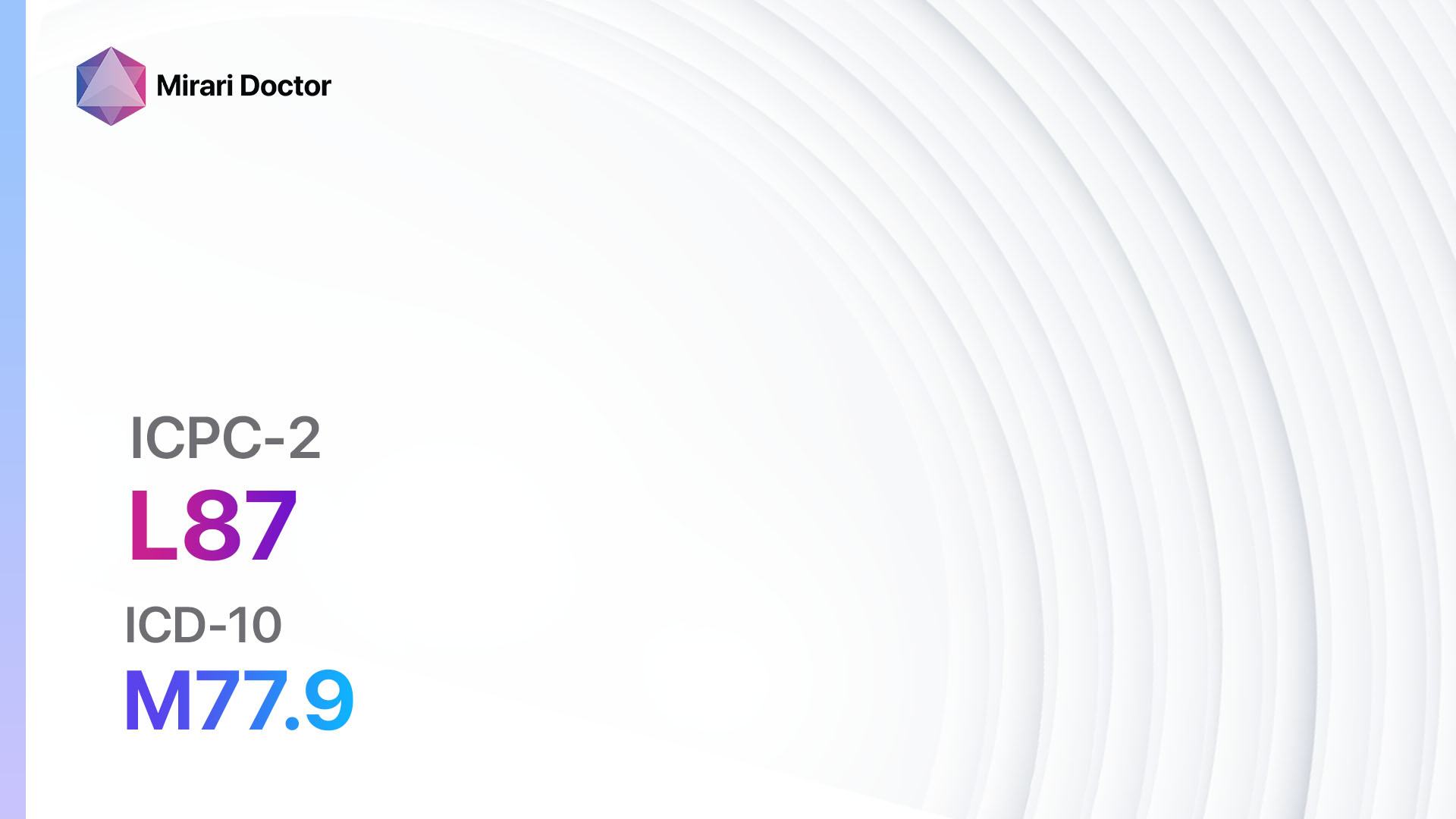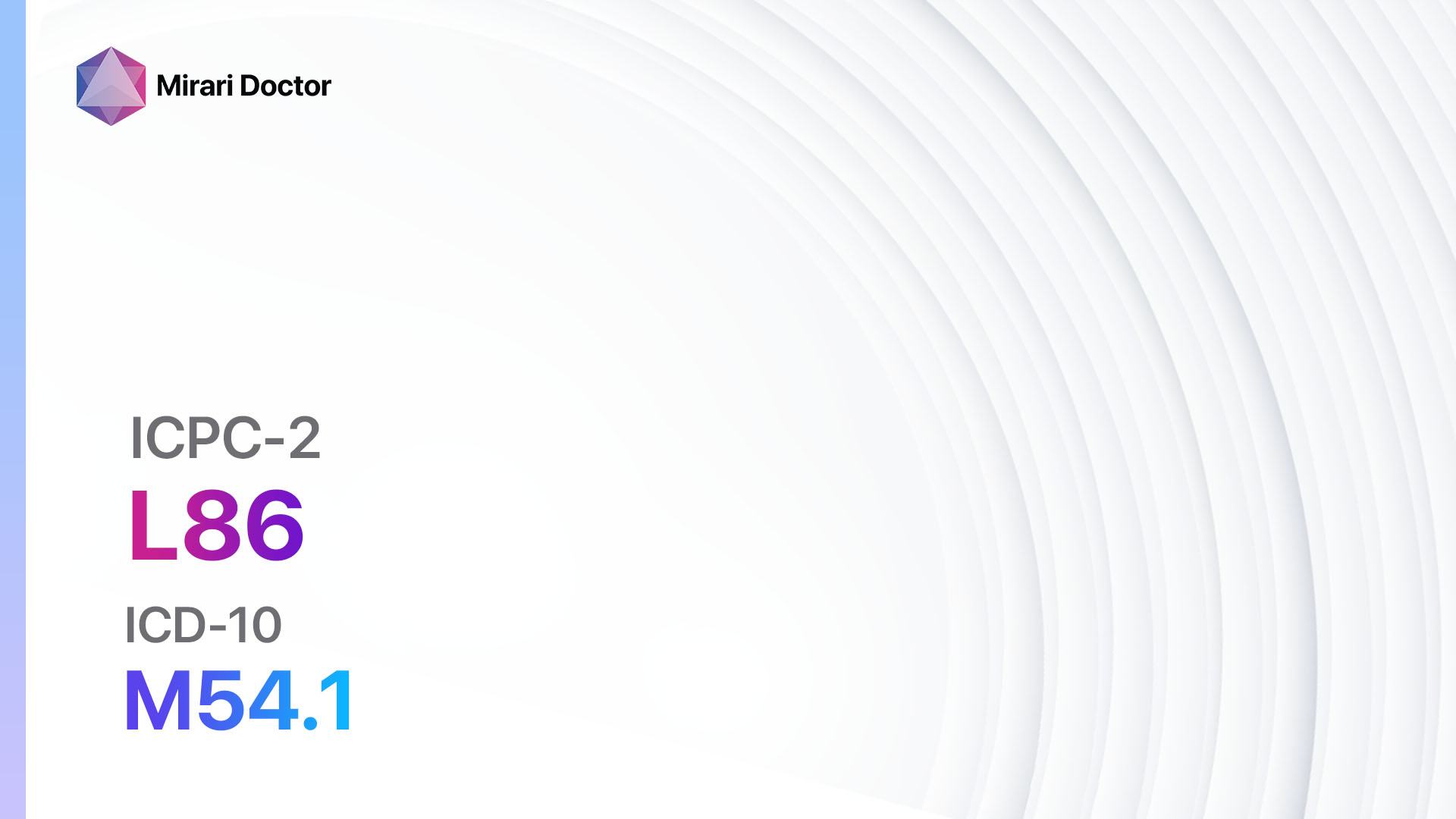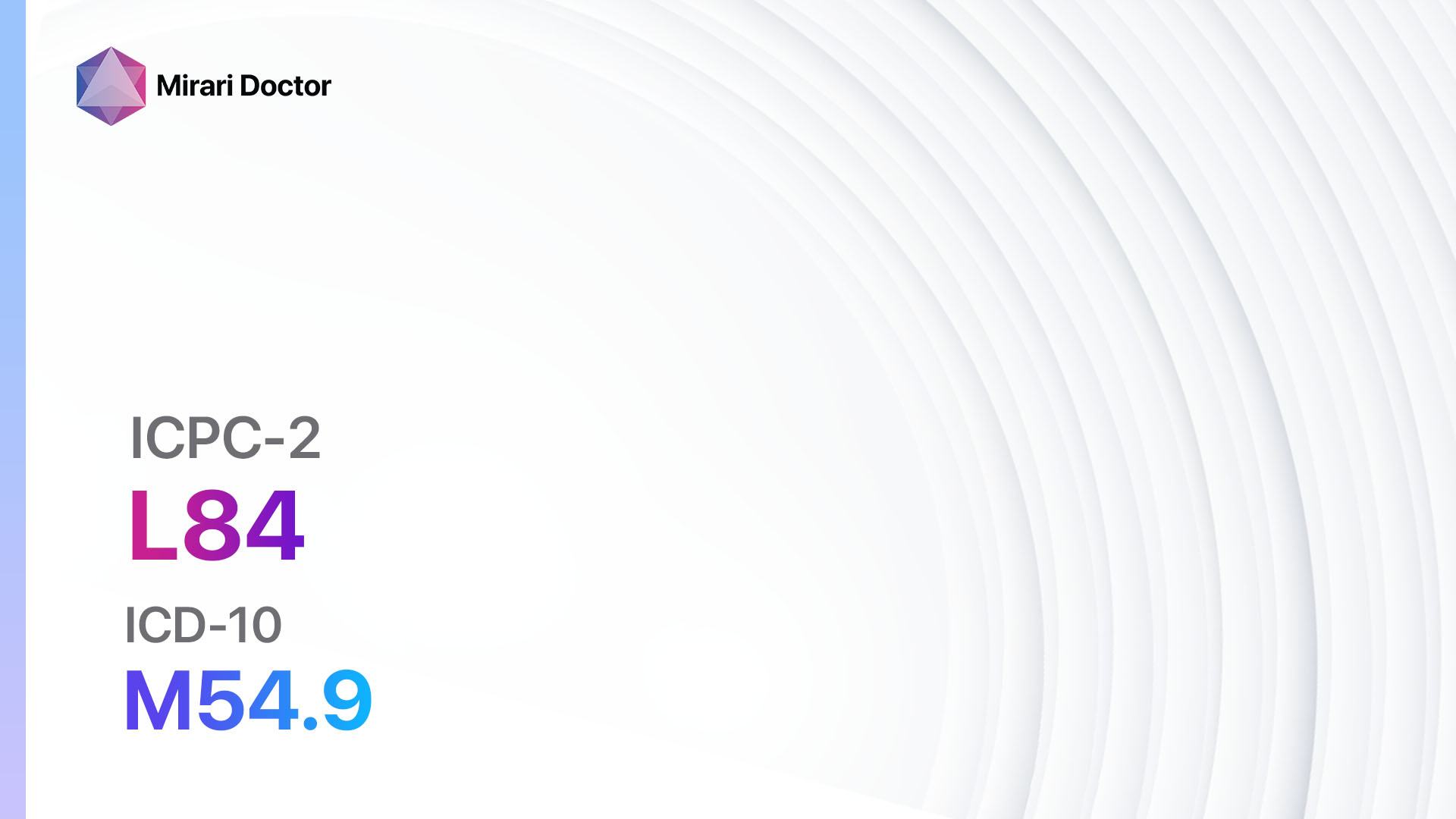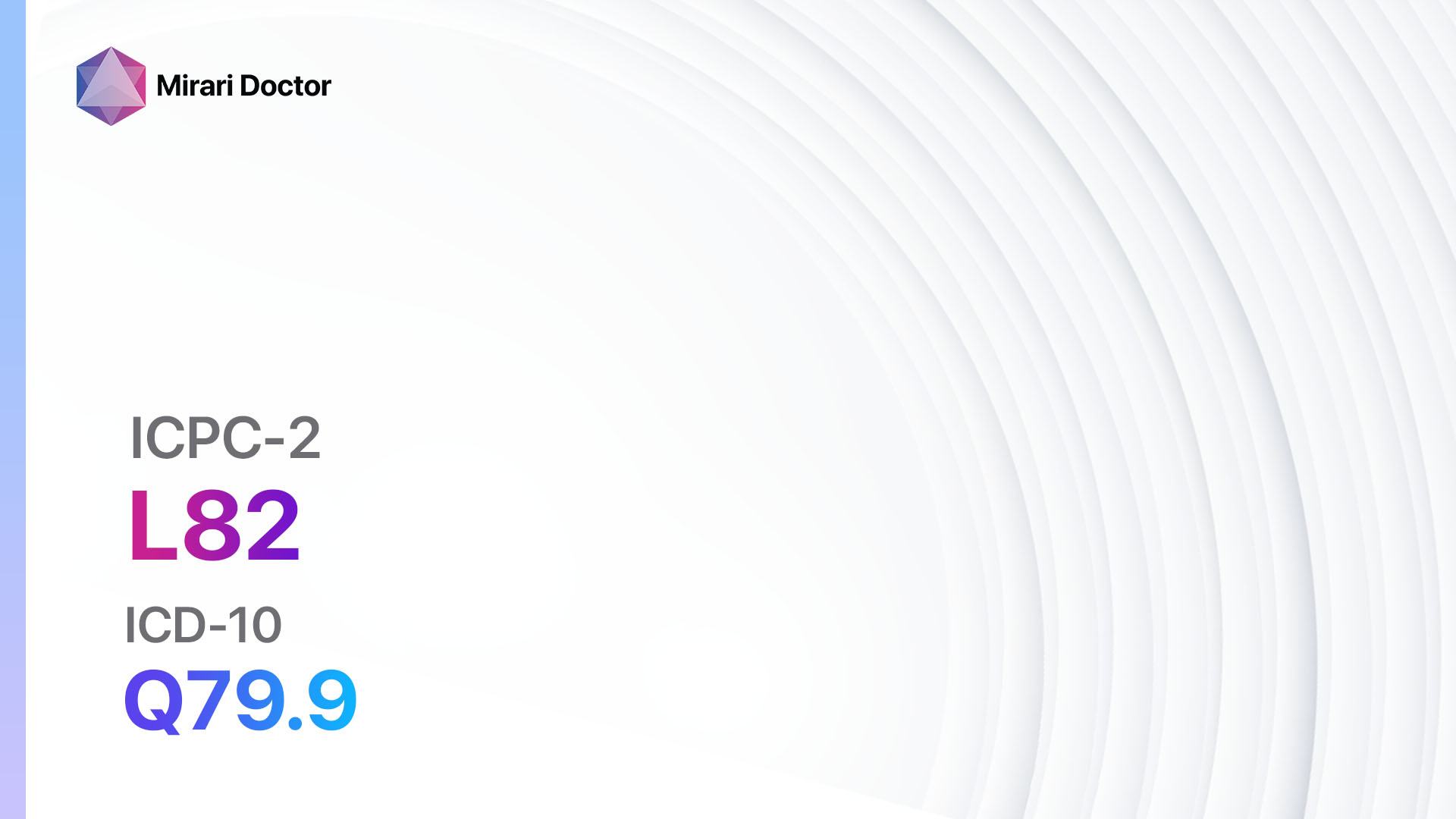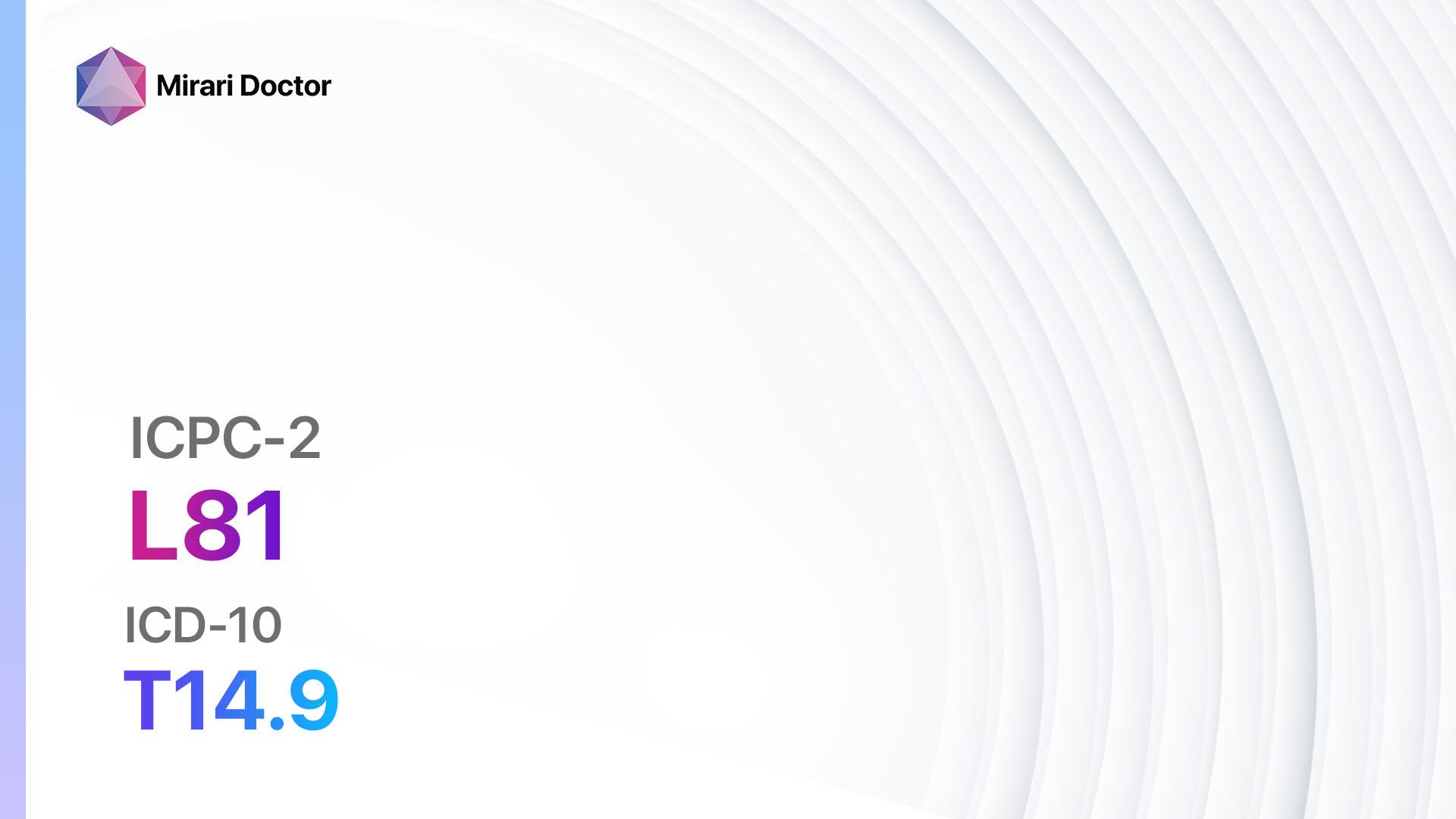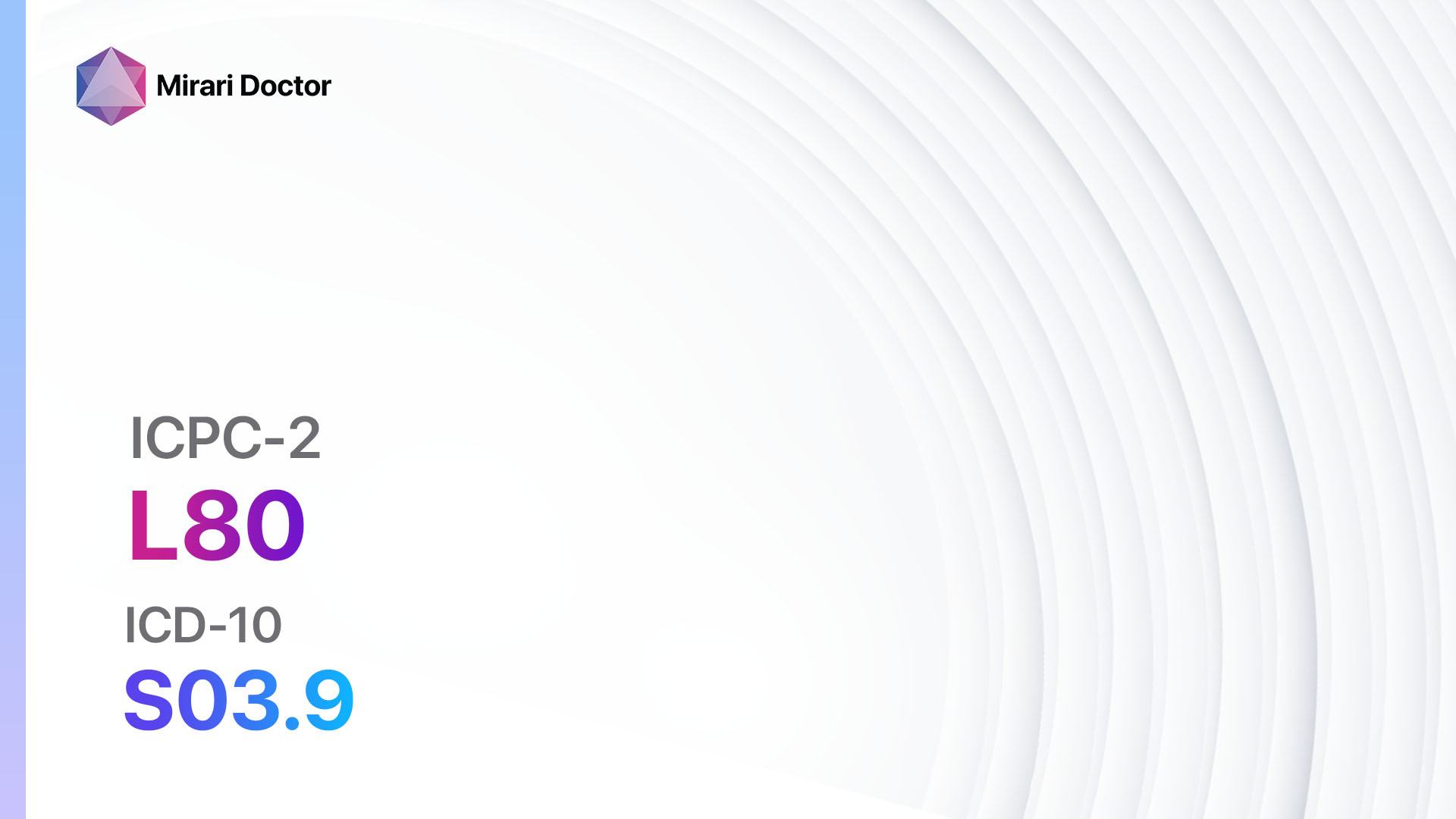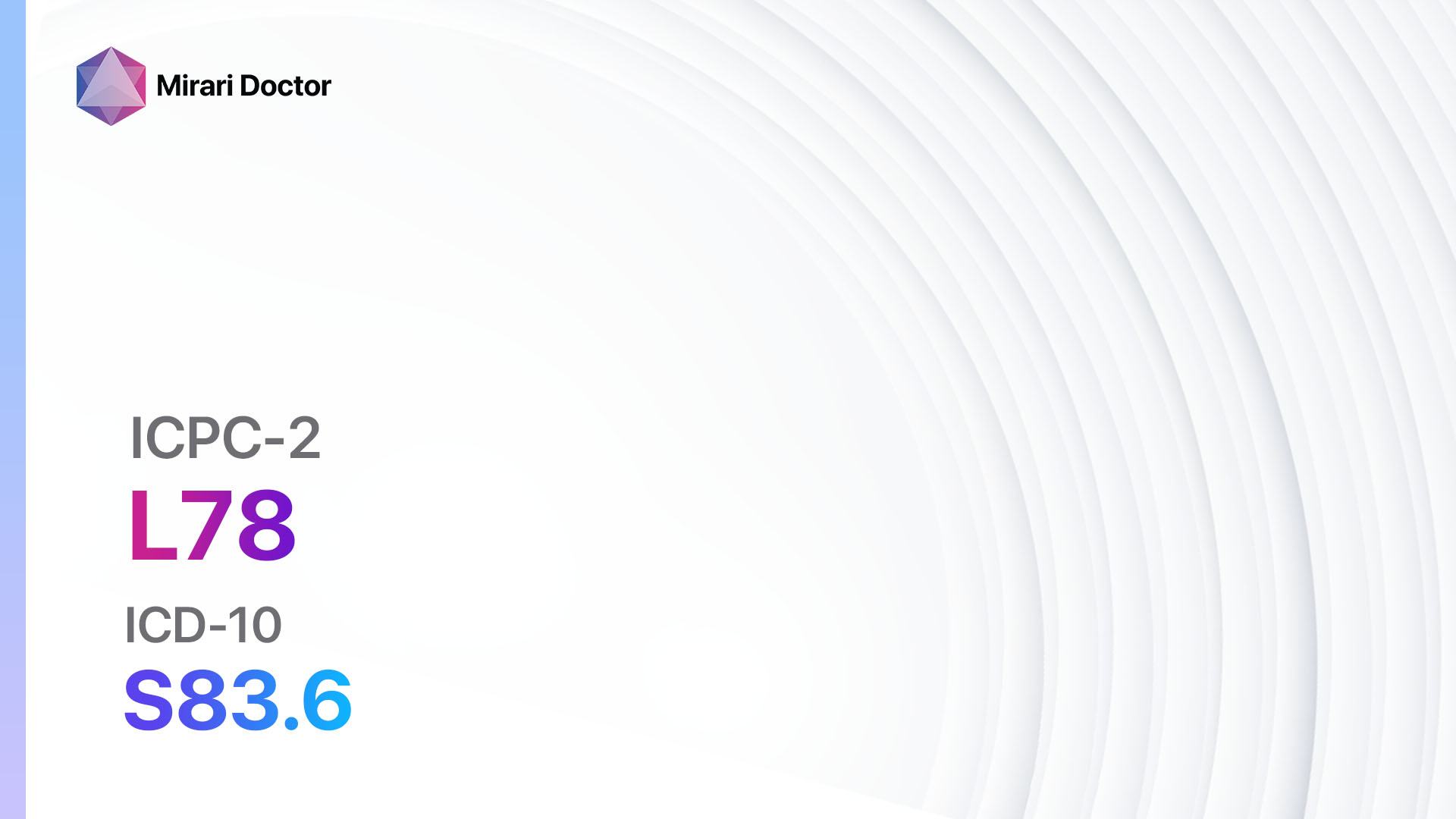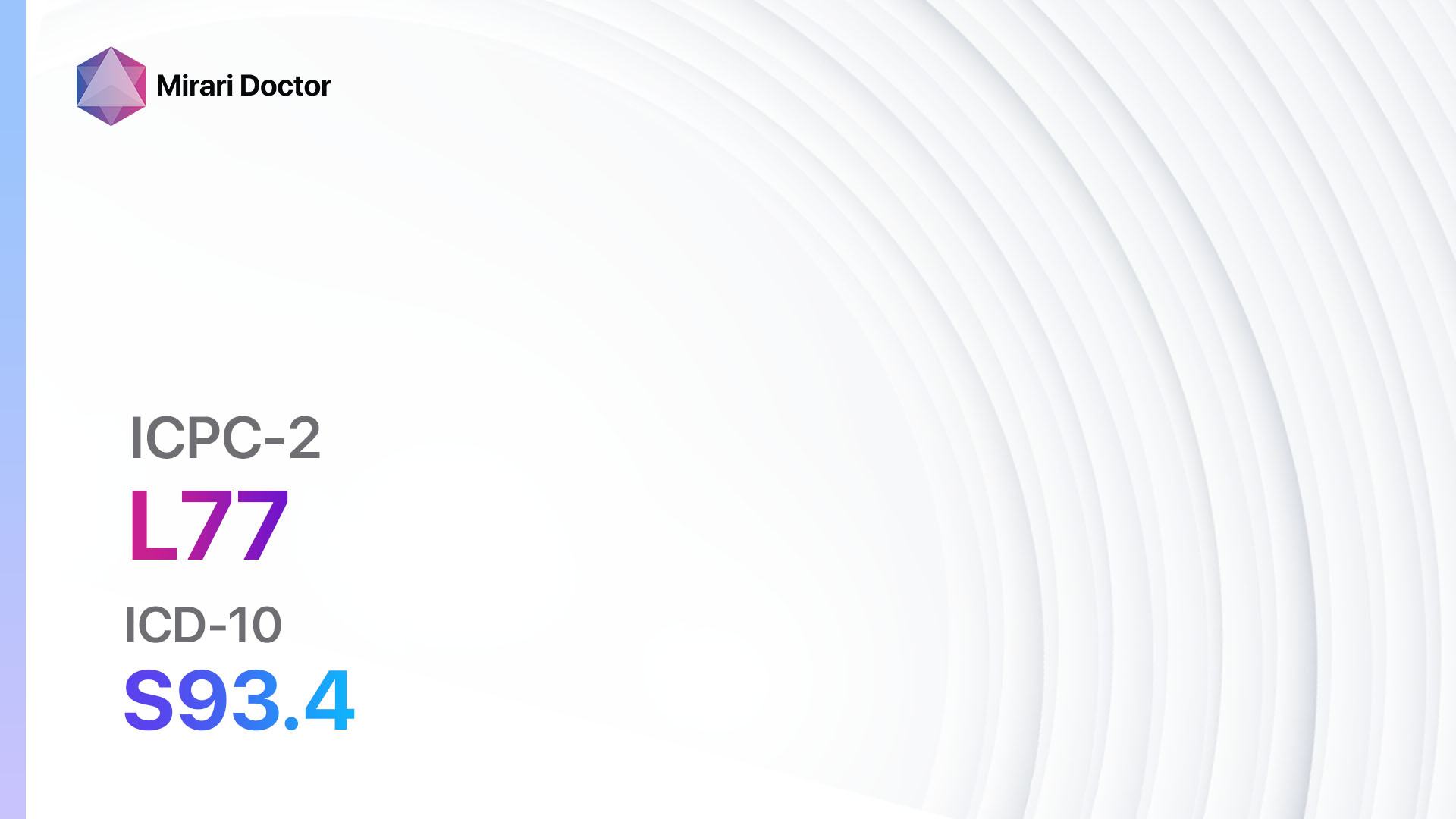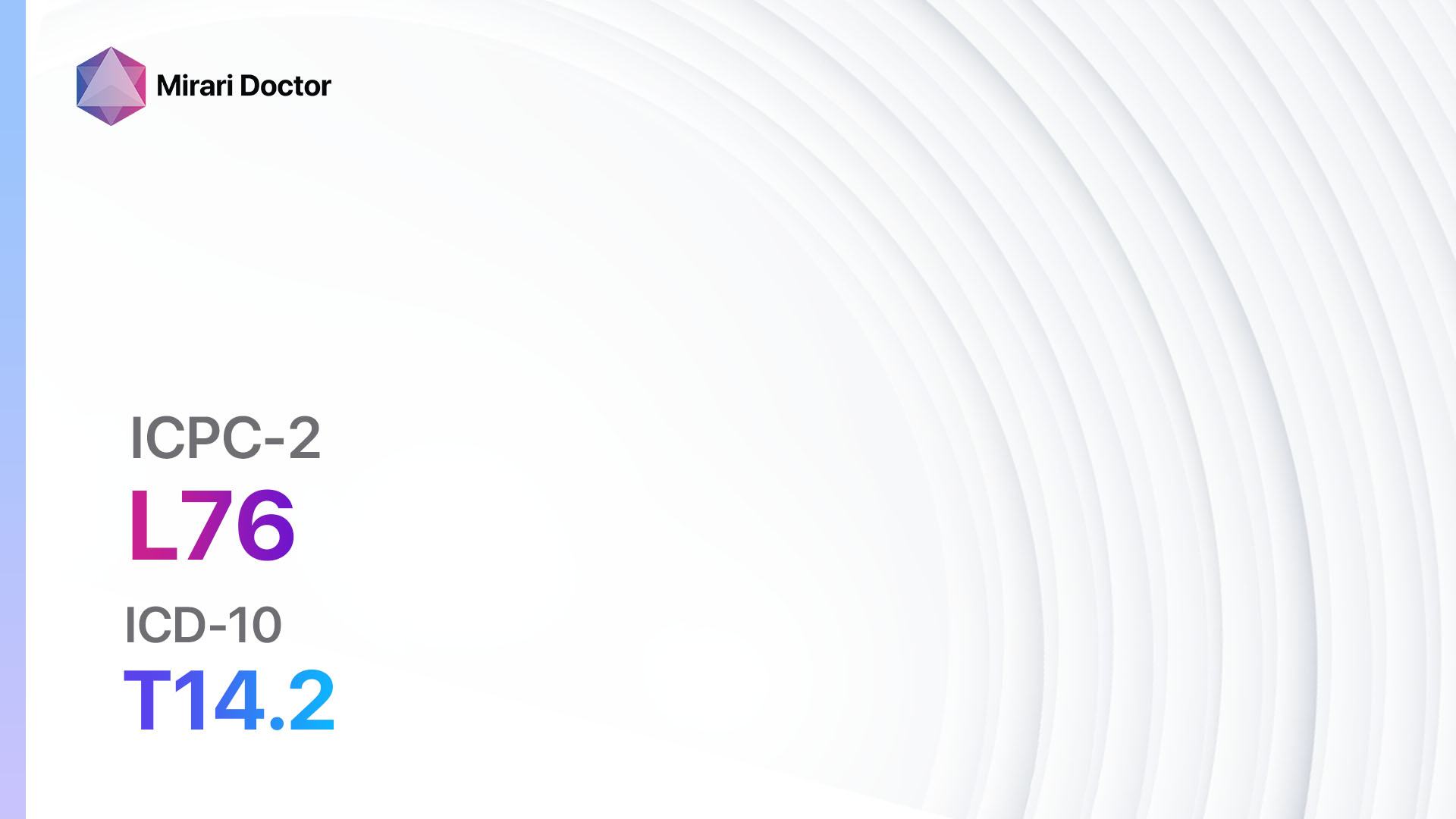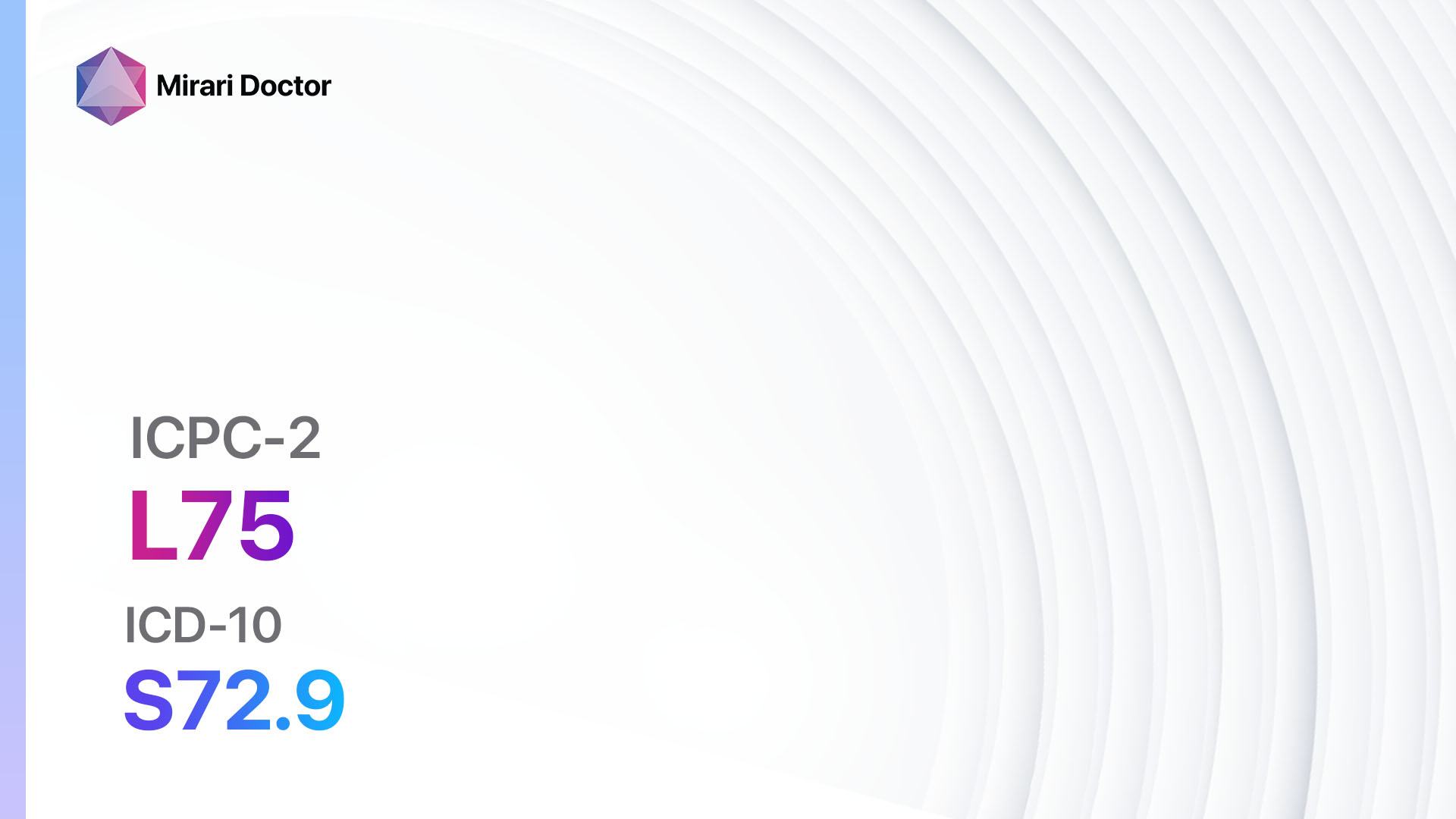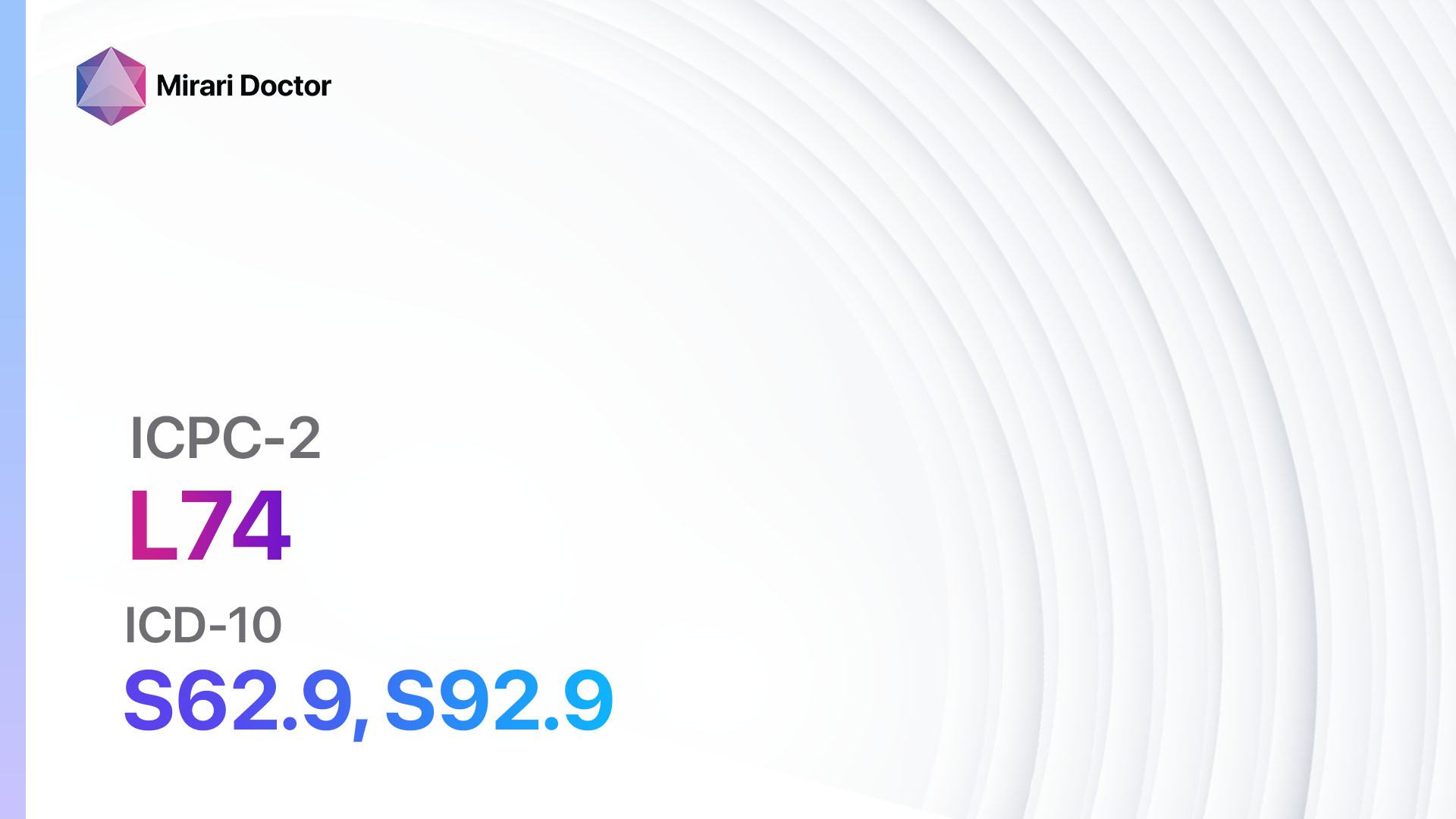
Introduction
Acquired deformity of the spine refers to abnormal changes in the shape or alignment of the spine that occur over time[1]. This condition can cause pain, limited mobility, and other complications[2]. The aim of this guide is to provide healthcare professionals with a comprehensive overview of the diagnostic steps and possible interventions for acquired deformity of the spine.
Codes
Symptoms
- Back pain: Dull, aching pain in the back that may worsen with movement or activity[3].
- Limited range of motion: Difficulty bending, twisting, or turning the spine[4].
- Changes in posture: Abnormal curvature of the spine, such as kyphosis (hunchback) or scoliosis (sideways curvature)[5].
- Numbness or tingling: Sensations of numbness or tingling in the arms or legs[6].
- Weakness: Weakness or loss of strength in the arms or legs[7].
Causes
- Aging: Degenerative changes in the spine that occur with age[8].
- Trauma: Injuries to the spine, such as fractures or dislocations[9].
- Infection: Spinal infections, such as osteomyelitis or discitis[10].
- Tumors: Abnormal growths in or around the spine.
- Congenital conditions: Spinal deformities present at birth, such as spina bifida or congenital scoliosis.
Diagnostic Steps
Medical History
- Gather information about the patient’s symptoms, including the duration, severity, and any factors that worsen or alleviate the symptoms.
- Identify any risk factors for acquired deformity of the spine, such as a history of trauma, previous spinal surgeries, or family history of spinal conditions.
- Inquire about any medical conditions that may contribute to the development of spinal deformities, such as osteoporosis or rheumatoid arthritis.
Physical Examination
- Perform a thorough physical examination, including a visual inspection of the spine for any abnormalities in curvature or alignment.
- Palpate the spine to assess for tenderness, muscle spasms, or deformities.
- Evaluate the patient’s range of motion, strength, and sensation in the arms and legs.
- Assess the patient’s posture and gait for any abnormalities.
Laboratory Tests
- Complete blood count (CBC): To assess for signs of infection or inflammation.
- Erythrocyte sedimentation rate (ESR) and C-reactive protein (CRP): Markers of inflammation that may be elevated in certain spinal conditions.
- Blood chemistry panel: To evaluate kidney and liver function, as well as calcium and vitamin D levels.
- Rheumatoid factor and antinuclear antibody (ANA) test: To rule out autoimmune conditions that may affect the spine.
Diagnostic Imaging
- X-rays: To visualize the bones of the spine and assess for any abnormalities in curvature or alignment.
- Magnetic resonance imaging (MRI): Provides detailed images of the soft tissues of the spine, including the discs, nerves, and spinal cord.
- Computed tomography (CT) scan: Useful for evaluating bony structures and detecting fractures or tumors.
- Bone scan: To identify areas of increased bone activity, which may indicate infection or tumors.
Other Tests
- Electromyography (EMG) and nerve conduction studies: To assess the function of the nerves and muscles in the arms and legs.
- Discography: Involves injecting a contrast dye into the discs of the spine to identify the source of pain or determine if surgery is necessary.
- Biopsy: If a tumor or infection is suspected, a sample of tissue may be taken for further analysis.
Follow-up and Patient Education
- Schedule follow-up appointments to monitor the progression of the condition and evaluate the effectiveness of interventions.
- Provide patient education on the importance of maintaining good posture, engaging in regular exercise, and avoiding activities that may exacerbate symptoms.
- Discuss the potential need for surgical intervention and provide information on the risks, benefits, and expected outcomes.
Possible Interventions
Traditional Interventions
Medications:
Top 5 drugs for Acquired deformity of spine:
- Nonsteroidal anti-inflammatory drugs (NSAIDs) (e.g., Ibuprofen, Naproxen):
- Cost: Over-the-counter versions are inexpensive. Prescription-strength NSAIDs can range from $10-$100/month.
- Contraindications: History of gastrointestinal bleeding, renal impairment.
- Side effects: Upset stomach, increased risk of bleeding.
- Severe side effects: Kidney damage, gastrointestinal ulcers.
- Drug interactions: Anticoagulants, corticosteroids.
- Warning: Prolonged use may increase the risk of cardiovascular events.
- Muscle relaxants (e.g., Cyclobenzaprine, Methocarbamol):
- Cost: Generic versions can range from $10-$50/month.
- Contraindications: Glaucoma, urinary retention.
- Side effects: Drowsiness, dizziness.
- Severe side effects: Allergic reactions, liver toxicity.
- Drug interactions: Sedatives, opioids.
- Warning: May cause drowsiness and impair cognitive function.
- Antidepressants (e.g., Amitriptyline, Duloxetine):
- Cost: Generic versions can range from $10-$50/month.
- Contraindications: Recent myocardial infarction, narrow-angle glaucoma.
- Side effects: Dry mouth, drowsiness.
- Severe side effects: Suicidal thoughts, serotonin syndrome.
- Drug interactions: Monoamine oxidase inhibitors (MAOIs), other serotonergic drugs.
- Warning: May take several weeks to achieve therapeutic effect.
- Opioids (e.g., Oxycodone, Hydrocodone):
- Cost: Generic versions can range from $10-$100/month.
- Contraindications: Respiratory depression, paralytic ileus.
- Side effects: Constipation, sedation.
- Severe side effects: Respiratory depression, addiction.
- Drug interactions: Benzodiazepines, alcohol.
- Warning: High risk of dependence and addiction.
- Anticonvulsants (e.g., Gabapentin, Pregabalin):
- Cost: Generic versions can range from $10-$50/month.
- Contraindications: Hypersensitivity to anticonvulsants.
- Side effects: Dizziness, drowsiness.
- Severe side effects: Suicidal thoughts, Stevens-Johnson syndrome.
- Drug interactions: Opioids, benzodiazepines.
- Warning: May cause drowsiness and impair cognitive function.
Alternative Drugs:
- Topical analgesics (e.g., Lidocaine patches): Provide localized pain relief without systemic side effects. Cost: $10-$50 per patch.
- Antidepressant/antiepileptic combinations (e.g., Venlafaxine/duloxetine with gabapentin/pregabalin): May provide synergistic pain relief. Cost: Varies depending on the specific combination.
Surgical Procedures:
- Spinal fusion: Joins two or more vertebrae together to stabilize the spine. Cost: $50,000 to $100,000.
- Laminectomy: Removes a portion of the vertebral bone to relieve pressure on the spinal cord or nerves. Cost: $20,000 to $50,000.
- Disc replacement: Removes a damaged disc and replaces it with an artificial disc. Cost: $30,000 to $80,000.
Alternative Interventions
- Physical therapy: Helps improve strength, flexibility, and posture. Cost: $50-$150 per session.
- Chiropractic care: Involves manual adjustments of the spine to improve alignment and reduce pain. Cost: $50-$200 per session.
- Acupuncture: May help relieve pain and improve overall well-being. Cost: $60-$120 per session.
- Massage therapy: Can help relax muscles and reduce pain. Cost: $50-$100 per session.
- Yoga: Incorporates stretching, strengthening, and relaxation techniques to improve spine health. Cost: $10-$20 per class.
Lifestyle Interventions
- Exercise: Regular physical activity, such as walking or swimming, can help strengthen the muscles supporting the spine. Cost: Varies depending on the chosen activity.
- Weight management: Maintaining a healthy weight can reduce stress on the spine. Cost: Varies depending on the chosen weight loss program.
- Ergonomic modifications: Making adjustments to workstations and furniture to promote proper posture. Cost: Varies depending on the modifications needed.
- Heat and cold therapy: Applying heat or cold packs to the affected area can help reduce pain and inflammation. Cost: Varies depending on the chosen therapy.
- Stress management: Techniques such as meditation or deep breathing exercises can help reduce muscle tension and promote relaxation. Cost: Varies depending on the chosen method.
It is important to note that the cost ranges provided are approximate and may vary depending on the location and availability of the interventions.
Mirari Cold Plasma Alternative Intervention
Understanding Mirari Cold Plasma
- Safe and Non-Invasive Treatment: Mirari Cold Plasma is a safe and non-invasive treatment option for various skin conditions. It does not require incisions, minimizing the risk of scarring, bleeding, or tissue damage.
- Efficient Extraction of Foreign Bodies: Mirari Cold Plasma facilitates the removal of foreign bodies from the skin by degrading and dissociating organic matter, allowing easier access and extraction.
- Pain Reduction and Comfort: Mirari Cold Plasma has a local analgesic effect, providing pain relief during the treatment, making it more comfortable for the patient.
- Reduced Risk of Infection: Mirari Cold Plasma has antimicrobial properties, effectively killing bacteria and reducing the risk of infection.
- Accelerated Healing and Minimal Scarring: Mirari Cold Plasma stimulates wound healing and tissue regeneration, reducing healing time and minimizing the formation of scars.
Mirari Cold Plasma Prescription
Video instructions for using Mirari Cold Plasma Device – L85 Acquired deformity of spine (ICD-10:M43.9)
| Mild | Moderate | Severe |
| Mode setting: 2 (Wound Healing) Location: 0 (Localized) Morning: 15 minutes, Evening: 15 minutes |
Mode setting: 2 (Wound Healing) Location: 0 (Localized) Morning: 30 minutes, Lunch: 30 minutes, Evening: 30 minutes |
Mode setting: 2 (Wound Healing) Location: 0 (Localized) Morning: 30 minutes, Lunch: 30 minutes, Evening: 30 minutes |
| Mode setting: 9 (Arthritis) Location: 0 (Localized) Morning: 15 minutes, Evening: 15 minutes |
Mode setting: 9 (Arthritis) Location: 0 (Localized) Morning: 30 minutes, Lunch: 30 minutes, Evening: 30 minutes |
Mode setting: 9 (Arthritis) Location: 0 (Localized) Morning: 30 minutes, Lunch: 30 minutes, Evening: 30 minutes |
| Total Morning: 30 minutes approx. $5 USD, Evening: 30 minutes approx. $5 USD |
Total Morning: 60 minutes approx. $10 USD, Lunch: 60 minutes approx. $10 USD, Evening: 60 minutes approx. $10 USD, |
Total Morning: 60 minutes approx. $10 USD, Lunch: 60 minutes approx. $10 USD, Evening: 60 minutes approx. $10 USD, |
| Usual treatment for 7-60 days approx. $70 USD – $600 USD | Usual treatment for 6-8 weeks approx. $1,260 USD – $1,680 USD |
Usual treatment for 3-6 months approx. $2,700 USD – $5,400 USD
|
 |
|
Use the Mirari Cold Plasma device to treat Acquired deformity of spine effectively.
WARNING: MIRARI COLD PLASMA IS DESIGNED FOR THE HUMAN BODY WITHOUT ANY ARTIFICIAL OR THIRD PARTY PRODUCTS. USE OF OTHER PRODUCTS IN COMBINATION WITH MIRARI COLD PLASMA MAY CAUSE UNPREDICTABLE EFFECTS, HARM OR INJURY. PLEASE CONSULT A MEDICAL PROFESSIONAL BEFORE COMBINING ANY OTHER PRODUCTS WITH USE OF MIRARI.
Step 1: Cleanse the Skin
- Start by cleaning the affected area of the skin with a gentle cleanser or mild soap and water. Gently pat the area dry with a clean towel.
Step 2: Prepare the Mirari Cold Plasma device
- Ensure that the Mirari Cold Plasma device is fully charged or has fresh batteries as per the manufacturer’s instructions. Make sure the device is clean and in good working condition.
- Switch on the Mirari device using the power button or by following the specific instructions provided with the device.
- Some Mirari devices may have adjustable settings for intensity or treatment duration. Follow the manufacturer’s instructions to select the appropriate settings based on your needs and the recommended guidelines.
Step 3: Apply the Device
- Place the Mirari device in direct contact with the affected area of the skin. Gently glide or hold the device over the skin surface, ensuring even coverage of the area experiencing.
- Slowly move the Mirari device in a circular motion or follow a specific pattern as indicated in the user manual. This helps ensure thorough treatment coverage.
Step 4: Monitor and Assess:
- Keep track of your progress and evaluate the effectiveness of the Mirari device in managing your Acquired deformity of spine. If you have any concerns or notice any adverse reactions, consult with your health care professional.
Note
This guide is for informational purposes only and should not replace the advice of a medical professional. Always consult with your healthcare provider or a qualified medical professional for personal advice, diagnosis, or treatment. Do not solely rely on the information presented here for decisions about your health. Use of this information is at your own risk. The authors of this guide, nor any associated entities or platforms, are not responsible for any potential adverse effects or outcomes based on the content.
Mirari Cold Plasma System Disclaimer
- Purpose: The Mirari Cold Plasma System is a Class 2 medical device designed for use by trained healthcare professionals. It is registered for use in Thailand and Vietnam. It is not intended for use outside of these locations.
- Informational Use: The content and information provided with the device are for educational and informational purposes only. They are not a substitute for professional medical advice or care.
- Variable Outcomes: While the device is approved for specific uses, individual outcomes can differ. We do not assert or guarantee specific medical outcomes.
- Consultation: Prior to utilizing the device or making decisions based on its content, it is essential to consult with a Certified Mirari Tele-Therapist and your medical healthcare provider regarding specific protocols.
- Liability: By using this device, users are acknowledging and accepting all potential risks. Neither the manufacturer nor the distributor will be held accountable for any adverse reactions, injuries, or damages stemming from its use.
- Geographical Availability: This device has received approval for designated purposes by the Thai and Vietnam FDA. As of now, outside of Thailand and Vietnam, the Mirari Cold Plasma System is not available for purchase or use.
References
- Aebi M. The adult scoliosis. Eur Spine J. 2005;14(10):925-948. doi:10.1007/s00586-005-1053-9
- Schwab F, Dubey A, Gamez L, et al. Adult scoliosis: prevalence, SF-36, and nutritional parameters in an elderly volunteer population. Spine (Phila Pa 1976). 2005;30(9):1082-1085. doi:10.1097/01.brs.0000160842.43482.cd
- Glassman SD, Bridwell K, Dimar JR, Horton W, Berven S, Schwab F. The impact of positive sagittal balance in adult spinal deformity. Spine (Phila Pa 1976). 2005;30(18):2024-2029. doi:10.1097/01.brs.0000179086.30449.96
- Lafage V, Schwab F, Patel A, Hawkinson N, Farcy JP. Pelvic tilt and truncal inclination: two key radiographic parameters in the setting of adults with spinal deformity. Spine (Phila Pa 1976). 2009;34(17):E599-E606. doi:10.1097/BRS.0b013e3181aad219
- Bess S, Protopsaltis TS, Lafage V, et al. Clinical and Radiographic Evaluation of Adult Spinal Deformity. Clin Spine Surg. 2016;29(1):6-16. doi:10.1097/BSD.0000000000000352
- Ames CP, Smith JS, Scheer JK, et al. Impact of spinopelvic alignment on decision making in deformity surgery in adults: A review. J Neurosurg Spine. 2012;16(6):547-564. doi:10.3171/2012.2.SPINE11320
- Schwab FJ, Blondel B, Bess S, et al. Radiographical spinopelvic parameters and disability in the setting of adult spinal deformity: a prospective multicenter analysis. Spine (Phila Pa 1976). 2013;38(13):E803-E812. doi:10.1097/BRS.0b013e318292b7b9
- Ailon T, Smith JS, Shaffrey CI, et al. Degenerative Spinal Deformity. Neurosurgery. 2015;77 Suppl 4:S75-S91. doi:10.1227/NEU.0000000000000938
- Kebaish KM, Neubauer PR, Voros GD, Khoshnevisan MA, Skolasky RL. Scoliosis in adults aged forty years and older: prevalence and relationship to age, race, and gender. Spine (Phila Pa 1976). 2011;36(9):731-736. doi:10.1097/BRS.0b013e3181e9f120
- Yadla S, Maltenfort MG, Ratliff JK, Harrop JS. Adult scoliosis surgery outcomes: a systematic review. Neurosurg Focus. 2010;28(3):E3. doi:10.3171/2009.12.FOCUS09254
Related articles
Made in USA



